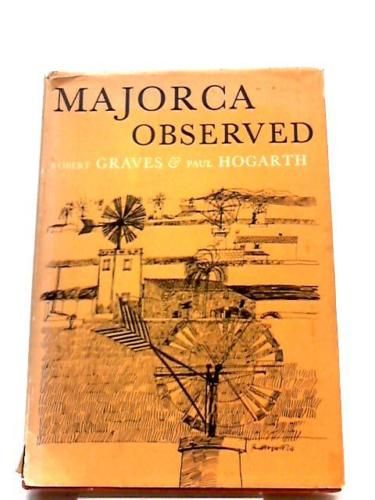Who lived in Deia?
Deià was home to several Canterbury-scene musicians over the years, including Kevin Ayers, Robert Wyatt, and Daevid Allen. Mick Jagger, guitarist Mark Knopfler, and Mike Oldfield played there often in the late 1980s, as did Caroline Corr.
Who is buried in Deia?
Poet Robert Graves
What is Robert Graves most famous poem?
10 of the Best Robert Graves Poems Everyone Should Read
Where did Robert Graves go to school?
Robert Graves/Education
What did Robert Graves discover?
Graves was one of the first physicians to fully describe exophthalmic goitre, now called Graves disease. His Clinical Lectures on the Practice of Medicine, published in 1848, are responsible for establishing his enduring reputation.
Who first discovered Graves disease?
The first description of thyroid diseases as they are known today was that of Graves disease by Caleb Parry in 1786, but the pathogenesis of thyroid disease was not discovered until 1882-86.
Was Robert Graves a pacifist?
Although a convinced pacifist, Graves was so shocked by the German invasion of Belgium on 4th August 1914, that joining up seemed to him the only honourable course of action.
Why did Robert Graves leave England?
Graves later claimed that one of his pupils was a young Gamal Abdel Nasser. He returned to London briefly, where he separated from his wife under highly emotional circumstances (at one point Riding attempted suicide) before leaving to live with Riding in Deià, Majorca.
Was Siegfried Sassoon a conscientious objector?
Many were Quakers and traditionally pacifist, while some were already employed in reserved occupations, like farming or forestry, which were essential to the war effort. But, as Sassoon himself found, being a conscientious objector was for some as difficult as life on the front line.
Was Siegfried Sassoon a pacifist?
It was one of the most famous pacifist gestures of the First World War – the moment poet Siegfried Sassoon tore off his decoration for bravery and hurled it into the sea. It happened on Formby Beach 100 years ago this week.
What religion was Siegfried Sassoon?
Catholicism
What is Siegfried Sassoon's most famous poem?
'The Dug-Out' is perhaps my favourite of all of Sassoon's poetry and one which stands out to me against his others, in all its confusion and sorrow. It was written in August 1918, after he was accidentally wounded by a fellow British soldier and discharged from active service.
Why was Siegfried Sassoon called Mad Jack?
In May 1915, Sassoon was commissioned into the Royal Welsh Fusiliers and went to France. He impressed many with his bravery in the front line and was given the nickname 'Mad Jack' for his near-suicidal exploits. He was decorated twice. His brother Hamo was killed in November 1915 at Gallipoli.
Did Sassoon survive the war?
Despite the near court-martial, Sassoon returned to active service in 1918. This time he was shot in the head by 'friendly fire'. However, he survived and spent the remainder of the war in England.
What is the name of the most famous poem of world war 1?
John McCrae “In Flanders fields the poppies blow,” it reads, “Between the crosses, row on row.” John McCrae died from pneumonia and meningitis in 1918, but not before the poem became one of World War I's most popular and widely quoted works of literature.
Which writer died on the battlefield in France during world war first?
Wilfred OwenDied4 November 1918 (aged 25) Sambre–Oise Canal, FranceGenreWar poetryMilitary careerService/branchBritish Army
Why was Siegfried Sassoon in Craiglockhart Hospital?
Siegfried Sassoon was sent to Craiglockhart, as a response to his "Soldier's Declaration", an anti-war letter. He later wrote about his experiences at the hospital in his semi-autobiographical novel, Sherston's Progress.
Does shell shock still exist?
The term shell shock is still used by the United States' Department of Veterans Affairs to describe certain parts of PTSD, but mostly it has entered into memory, and it is often identified as the signature injury of the War.
What happened to Wilfred Owen in Craiglockhart?
Wilfred Owen returned to the frontline following his spell in Craiglockhart and was killed on 4 November 1918, just a week before Armistice was declared. Sassoon would also return to the front. Despite being shot in the head, he recovered and returned home.
How many patients did Craiglockhart?
Between October 1916 and March 1919, 1736 patients with shell shock were treated at the hospital.
What is shell shock?
The term "shell shock" was coined by the soldiers themselves. Symptoms included fatigue, tremor, confusion, nightmares and impaired sight and hearing. It was often diagnosed when a soldier was unable to function and no obvious cause could be identified.
How do I get to Craiglockhart Hill?
From The Edinburgh Napier Craiglockhart Campus Then turn right and go up the stairs through the woods. To get to Wester Craiglockhart Hill, on Glenlockhart Road you'll come to a small opening in the wall/fence on the right side of the road. Follow the path through the trees around to the left and up the hill.
Who did Wilfred Owen meet at Craiglockhart Hospital?
Poet Siegfried Sassoon
When did shell shock come into use?
Who did Wilfred Owen meet in the hospital?
While in a hospital near Edinburgh he met the poet Siegfried Sassoon, who shared his feelings about the war and who became interested in his work. Reading Sassoon's poems and discussing his work with Sassoon revolutionized Owen's style and his conception of poetry.
